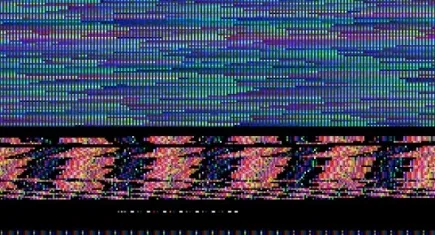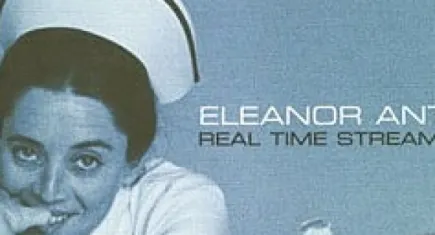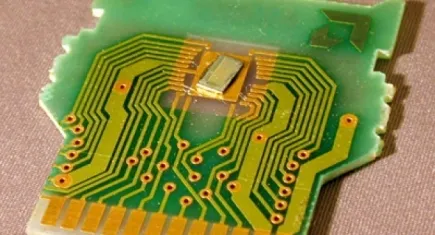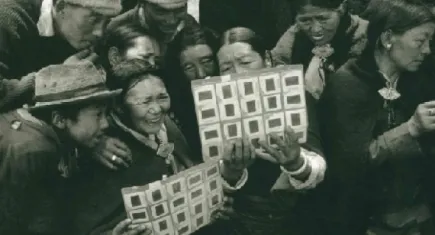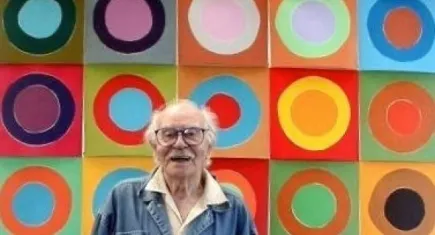Mead Gallery Exhibitions 2001
Bit Parts in Little Theatre
A Mead Gallery Event
Sat 1 Dec 2001
As part of the Read-Only Memory exhibition, this is a specially commissioned performance of experimental music and explorations in sound, performance and spoken word. It is presented by artists based in the West Midlands: Dreams of Tall Buildings, Frank Cougar, Halalart and OHNe/projects and curated by Matt Golden.
Eleanor Antin: Real Time Streaming
A Mead Gallery Exhibition, touring to Arnolfini, Bristol
Sat 29 Sep – Sat 1 Dec 2001
Eleanor Antin is among the first generation of American feminist conceptual artists. Her irreverent attitude towards art and its place within everyday life was influenced by involvement in the Fluxus movement – an iconoclastic group of artists including Yoko Ono, that came together in New York during the 1960s.
This retrospective exhibition includes a range of media from sculpture and photography to film and video installations. For Antin, historical time is fallible and limiting and she blurs the boundaries between art and life with theatricality and masquerade.
Among the exhibitions is the celebrated 100 Boots of 1973, a series of 51 postcards that were mailed to hundred of recipients in the US, Japan and Europe. They feature the adventures of a hundred pairs of wellingtons on an epic journey from the west to east coasts of America. The cards were then exhibited at the Museum of Modern Art, New York.
Whether in performance, photography or installation, Antin continues to investigate the construction of identity through a variety of ironic roles. Through exploration of her works, our very notion of self begins to unravel.
An illustrated catalogue accompanies this exhibition. It includes essays by Howard N. Fox, Martha Rosler and Rachael Thomas.
Supported by the Arts Council England National Touring Programme.
Review by Michael Stanley
I sometimes find it quite strange viewing the work of a living artist in the context of a retrospective exhibition – it’s similar to a compilation of greatest hits by a pop group that is yet to split up. There remains an unanswered question as to whether they have peaked or if the best is yet to come.
‘Real Time Streaming’ is a retrospective exhibition of work by the artist Eleanor Antin, a key figure in the American feminist movement of the sixties and seventies. Curated by the Mead Gallery’s Rachael Thomas, the selection of work has been made with an awareness of its relevance both to a contemporary audience and to contemporary practice. This is not only alluded to in the internet-derived title, but also in the numerous catalogue references proclaiming Antin’s influence on a younger generation of artists. This suggests that the resurgent interest in Antin’s work owes itself to the increasing use of narrative and autobiography in the practice of such contemporary women artists as Cindy Sherman, Linder Sterling, Tracey Emin and Gillian Wearing.
Throughout her work, Antin embraces the Duchampian desire to consider life as theatre, adopting the personae of part real, part fictitious, historical figures, living their lives in the present and using masquerade as a means of critiquing the socio-politics of American life. These varied personae: the King of Solana Beach, the Nurse (a re-modelling of Florence Nightingale) and the invented alter ego of Eleanora Antinova, ‘the once celebrated, but now retired black ballerina from Diaghilev’s Ballet Russe’ are captured in photographs, video works and drawings.
Such has been the influence of Antin’s practice on the later generation of artists that there is a tendency in the exhibition to pinpoint those pivotal pieces that were to have subsequent conceptual acclaim. Carving: A Traditional Sculpture (1972) and Representational Painting (1971) are the type of works unknowingly re-made by art students the world over. Antin dieted for a thirty-six day period, losing ten pounds in weight and physically ‘carving’ her body to its ‘ideal’ form. Presented in a grid form of 144 black and white photographs, Carving: A Traditional Sculpture ironically references the pseudo-scientific work of Muybridge, whilst at the same time pre-empting the future practice of artists such as Orlan. Representational Painting is a short video piece in which Antin systematically applies make-up, transforming the ‘plain’ to the culturally acknowledged notion of ‘beautiful’. What the inclusion of these pieces bring into focus, is that despite the varied approaches which Antin adopts: masquerade, performance or document, at the heart of the work lies a continued critique of the representation of the female body.
Read-Only Memory: Catherine Elwes, Tracey Emin, Sarah Lucas, Catherine Yass
A Mead Gallery Exhibition
Sat 29 Sep – Sat 1 Dec 2001
Many contemporary artists share Eleanor Anton’s conviction that life is art and art is life. Our complementary autumn term exhibition Read-Only Memory, explores fictional characters and narrative to question notions of identity.
Every few weeks, a singular work will be showing in the gallery that provokes question about real and implicit memory of our lives. The season opens with two works by Tracey Emin: ‘The Dress is Worth More Money than the Money’ and ‘Why I Never Became a Dancer’. These are followed by ‘Town Boxing’ by Catherine Yass, ‘Boy Scout Soldier’ by Catherine Elwes and a show of photographs by Sarah Lucas.
Magna Brava: Magnum's Women Photographers
Organised by the Scottish National Portrait Gallery and Magnum Photos, London
Wed 25 Apr – Fri 29 Jun 2001
Magnum Photos was established New York in 1947 by Robert Capa, Henri Cartier-Bresson, George Rodger and David ‘Chim’ Seymour, as an independent photographers’ cooperative. Photo-reportage became the agency’s hallmark, producing some of the most arresting and enduring images of the last half-century. This is the first exhibition to bring together the work of the five female Magnum members.
Each photographer selected a body of work in a region where, in the Magnum tradition, they have spent a considerable amount of time: Eve Arnold in China, Martine Franck in Ireland, Susan Meiselas in Nicaragua and El Salvador, Inge Morath in New York and Marilyn Silverstone in India. The underlying theme of this exhibition is people: the threatened Gaelic community of Ireland’s Tory Island, the terrible impact of violence in Central America and the elegant portraits of the famous and the unknown in New York
Containing 180 photographs in colour and black and white, Magna Brava reveals a distinct and distinguished view of the world by five of the greatest documentary photographers working in the investigative tradition.
Terry Frost: Six Decades
Exhibition organised by the Royal Academy of Arts, London and supported by Paul and Alison Myners
Wed 10 Jan – Tue 13 Mar 2001
Sir Terry Frost RA is one of Britain’s most respected and successful abstract artists. He was born in 1915 in Leamington Spa and to celebrate his 85th birthday, the Royal Academy has organised this major retrospective exhibition.
Terry Frost is renowned for his use of pure vibrant colour and for the spirit and energy that his work exudes. Although purely abstract, his painting relate to things seen and felt. In the forms and colours, the viewer can discover Frost’s experiences in life, many of which provide a real contact with the power of the elements in the natural world.
The exhibition features of 40 works loaned from both public and private collections, spanning his 50 year career. This presentation is the only showing of the exhibition outside London. It is accompanied by a full colour catalogue
Abridged artist’s commentary taken from the catalogue to the exhibition. The commentary loosely follows the arrangement of the works in the Mead Gallery but visitors are encouraged to find their own path through the exhibition and to move freely between the paintings.
Gallery One
Door in Wall, Beaufort Street, 1946-7
You can see all the spaces in between the solid forms. I think that [the Camberwell] kind of painting, for me was quite a good lesson: the discipline of it is how you learn.
The Chair, 1947
I did this painting by the light of an electric light bulb between midnight and three in the morning. Matisse would have been pleased with that bit of chair.
Self-portrait, 1948
The real problem I was solving in this portrait was how to use warm and cool to make forms, so I put a bit of Indian red on the nose and a bit of green on the ear, which seemed an obvious was of making space without thinking in terms of tone.
Battersea Park, 1947
On Mondays at Camberwell we had composition classes and we were once asked to do something with six figures in. So when I took my son Adrian out in the pram to Battersea Park I was observing people and I made up the six figures from my sketches with Albert Bridge in the background.
Mrs Pollard, Eddy and Cocking, Back Road West, St Ives, c. 1947
I lost the top of the painting because I cut it off to use for something else: the island was there.
Miss Humphries, 1948
I had been drawing her for about six weeks and I set about trying to do the painting because I must have read that great artists painted from drawings. And of course it was quite a shock because I then learnt that I hadn’t got all the necessary information about where all the spaces were, all the softness and the hardness so I had to do a lot more thinking.
Walk Along the Quay, 1950
I marked the canvas out geometrically before I started. There is sky at the top, then a meeting of sea and sky. At the bottom there is a little bit of still water where the boats are moored up.
Madrigal, 1949
I just made the painting, the first abstract that I showed, happen according to my intuitive reaction to the poem (Madrigal by W.H. Auden). I was using a rectangle and appreciating a flat surface, all in tonal Camberwell colours.
Yellow Painting, 1952
The Golden Section is here again and wedge shaped areas that make the painting jammed tight. The little bits of frivolity are my bit of fun. Those spirals are there because I was trying to stick my coloured shapes on and they fell off: the glue was a black kind of bitumen stuff which I put on in a spiral.
Yellow Triptych, 1957-59
The painting is the size of the wall in the bedroom that I used as a studio. I couldn’t step back far because I had tins of paint all over the place. I suddenly realised I was painting in a different way from easel painting, right up to it. It meant that I was working from my concepts, very close to the idea: it’s about thought rather than walking back to see it.
Black Wedge, 1959
I get a chance to use interesting colour here, and it’s lovely to do that squeeze of colours, yet keep it flat. There was a great domination of Moore and his lying down things and I think this painting is a bit to do with reclining form.
Leeds Painting ll, 1954-56
I used to wind up the engine of my Bedford van on the cold, damp mornings in Leeds to make it start. Then I would look up and see the octagonal shape around the sun above the verticals of the tree. The shape in this painting was all tied up with the movement of what I was doing.
Red, Black and White, Leeds, 1955
Here down in Cornwall I can see the moors on three sides and the sun and the moon. But when I went out on to Ilkley Moor, I suddenly felt no longer a giant but just a little tiny person, faced by Goredale Scar and other scars flat up in front of me. It was an honest solution to painting landscape on a flat surface, because that was what it looked like.
*Blue Winte*r, 1956
This painting is about driving home from Harrogate with the landscape on my right. It was white with a beautiful blue moon: it had been snowing. Here is my blue moon at different stages and the landscape, which I am still treating as in Red, Black and White, Leeds.
Winter Nude, 1959
The white is because I just wanted to make it lovely. It is not pornography or anything like that, it’s a love side. It’s very simple, the chevrons and wedges are all part of the figure.
Blue Linen Figure, 1960
The use of collage can depend on liking the colour of the canvas. You can make a form when you cut the canvas, you are taking a positive decision, like with this great wedge.
Laced Grace (prototype), 1962
I did the lacing first in charcoal which was easy but when it came to cutting holes in the canvas for the boot laces, it was not so easy. Then I slit the canvas and I solved the problem of how to cross the laces. The chevrons running in a line up the top of the picture are vertebrae.
SS99, 1962-62
I was told I was bad at lettering at school so I made these S and 9 shapes mainly from drawing round circles. The image is also to do with the fact that my grandmother used to have corsets that she would ask me to lace up.
Gallery Two
Force 8, 1960
I painted to the sound during the whole of the gale and it really made me hit the strokes. The wedges take hold of the whole thing and tighten it like a spanner. Also, the colour is very interesting because it allows the canvas to come through. Different weights, different speeds, different thrusts, all what a gale is like.
M17, October, 1962
This is a snorter. I am proud of that. I thought, why don’t I do all the signs I have seen on one canvas. So you have everything on there I have ever done.
September, 1964
I went to San Jose and travelled through the desert and saw colours of this kind. They gave me acrylic in San Jose and that is why I started using it after that, but this is still in oils. I like drawing on the canvas – this painting shows those thin lines I started using in 1954, it takes a bit of doing to retain them.
Spring, 1966
In this painting, the chevrons are going out and supporting the central figure instead of penetrating it.
Mae West, c. 1965
I had always done constructions, one or two a year, because I always wanted to be a sculptor and a painter and a potter. The title came after it was made. I called it Mae West because it’s big at the front, it’s as simple as that.
Construction, 1966
In Banbury, there was a furniture shop that threw away lots of wood shapes that had been cut out from furniture. They happened to be those semi-circles. When I wanted to do a big one, I had to have the wood cut for me. And then I learnt to put the canvas round. My mother was a dressmaker, so I learnt how to cut on the bias.
Red, Black and White, 1967
At that time in my life, I could paint on the floor, so I would stand to make semicircles which were drawn by my body. You couldn’t do that on an easel because you would plan it too much if you did.
Stacked Red Pisa, 1971
This is part of a whole series of suspended forms. Some were three-dimensional; my studio in Banbury was full of painted tubes of canvas filled with polystyrene granules. I have always like that kind of looped shape. It is in every landscape, every half moon and because it is such a universal shape I can do anything I like with it.
Exclamation Mark, 2000
I am several persons: I am a person who would like to be a minimal artist and I’m also a person who likes people and painting people. Black and white and red I think are superb. You think of Malevich with his black cubes or Lissitzky who can write ‘CCCP’ and make it into a painting with one exclamation mark which took me out of this world when I saw it.
Gallery Three
Through Blacks, 1972-73
When doing paintings like this, I mix the colours for about fifteen weeks, adding little bits of red, yellow and blue until I break to the yellow side of black, the blue side and so on: it’s a very long job. Then I cut all the shapes because I’ve got a rhythm in the semi-circle. The colours on the left-hand side are the ones that I was mixing from. When you are mixing from yellow, red and blue, you are going to get a hell of a range.
Through Blues, 1975
I’m now free from copying anything: the shape is not related to a woman’s bottom, it’s not related to boats, it’s my personal shape and it’s free. I can do anything I want, I can make it faster or slower, the canvas thicker or thinner and I can paint it any colour I want in the range that I am doing and then I get the magic of all the shapes in between.
Blue for Newlyn, 1989
There’s a black moon in here, twilight colours and stacked colours down the side. It’s a nice big canvas and I enjoyed doing it. That’s what counts. Too much agony doesn’t come off sometimes.
Black Olives for Lorca, 1989
Cordoba
Far away and alone.
Black pony, big moon,
And olives in my saddlebag.
Although I know the roads
I’ll never reach Cordoba
Through the plain, through the wind,
Black pony, red moon.
Death is looking at me
From the towers of Cordoba
Ah! How long the road!
Ah! My valiant pony!
Ah! That death should wait me
Before I reach Cordoba!
Cordoba
Far away and alone.
‘Song of the Rider’ by Federico Garcia Lorca.
I’ve got the black olives and there is a moon in there too. Lorca is so simple and so direct and so full of colour and ideas.
October 12, Lizard Sunrise, 1999
Over the years I must have taken hundreds of photographs of sunrises which are never the same and change every two seconds. It was a question of feeling right about the colour. Is it yellow, is it orange, what’s the colour round it?
Sunblast, 1988
This painting is based on the sunrise but has an explosive liberty which is not to do with any sunrises at all. If you make coloured marks like that, you get the best white in the world at the centre. I got that from Russian Constructivism.
Spirals, 1991
I like spirals because they’re forever. If you walk along the coast as I used to do a lot, you pick up shells and you see those shapes. They are always a growth form.
Black Sun, 1978
Black is the container of all colour. As I’ve spent so much time making blacks and teaching students to make blacks from red, yellow and blue, it’s a very important part of my painting life. While teaching I would try to make people see the colour in black.
Newlyn Rhythms, 1981-88
This is similar to the ‘Through’ paintings but the trial here is a square within a square. Originally, all these lines were marked according to the Golden Section, to determine where the curve turns which means that every shape has a proportional relationship to each other. As soon as you put some colour in a shape it appears either bigger so smaller, or faster or slower.

